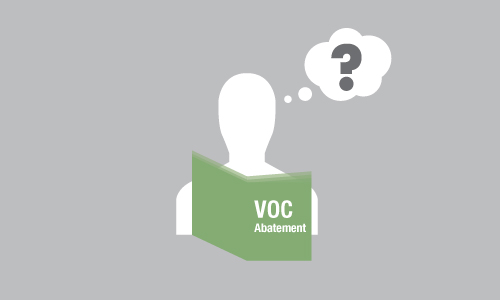Catalytic oxidizers can help destroy VOCs and other dangerous pollutants, so check out our complete guide to learn more today!
VOCs and other dangerous airborne pollutants can have adverse effects on our health (source). For this reason, factories and manufacturing facilities are required to put abatement methods in place that help destroy these pollutants before they enter our atmosphere.
There are many different VOC abatement techniques out there, but catalytic oxidizers are among the most cost-effective VOC abatement systems available today.
How Do Catalytic Oxidizers Work?
Air pollutants such as volatile organic compounds can be destroyed and broken down into heat, water, and carbon dioxide (source) through different means. Today, most oxidation mechanisms simply rely on heating up VOCs until they are destroyed. On the other hand, catalytic oxidizers employ an industrial-grade catalyst to help promote oxidation at lower temperatures.
Although catalytic oxidizers introduce catalysts to help promote a chemical reaction, the temperature inside of the catalytic chamber still has a significant impact on its performance. Both temperature and the amount of time the pollutants spend in the catalytic chamber control the rate of reaction. Moreover, catalytic oxidizers tend to use less energy because they operate at lower temperatures, and they can be extremely energy efficient.
Choosing the Best Catalytic Oxidizer
As we mentioned before, many different industries face similar VOC and air pollutant abatement challenges. Catalytic oxidizers offer an excellent alternative for manufacturing facilities that don’t have extremely high operating temperatures but still generate dangerous pollutants as by-products.
Note that purchasing a catalytic oxidizer is just like acquiring another complex piece of equipment. You won’t be able to test your oxidizer or see a sample; therefore, you have to gather all the relevant pieces of information and make sure you choose a reliable manufacturer that uses high-quality materials right off the bat.
Size
You first have to consider the size (or volume) of your ideal oxidizer. The right catalytic oxidizer should be able to handle your maximum exhaust rate comfortably. The exhaust rate will depend on the specific processes you carry out in your facilities and how many of them are connected to your oxidizer. At the same time, if you plan to expand or enhance your facilities, you need to make sure the catalytic oxidizer is scalable as well.
Operating Cost
All oxidizers require high operating temperatures. Introducing a catalyst allows catalytic oxidizers to operate at considerably lower temperatures, which leads to lower operating costs. That being said, there are other elements that influence costs, such as the catalyst used and the schedule on which your factory runs. Keep all of these in mind when choosing your abatement method.
Type of Catalyst Used
Many different types of catalysts can be used in catalytic oxidizers. However, precious metal catalysts have proven to be the most versatile. These can be categorized into monolith or bead-type designs, and they both have different benefits that are suitable for very specific uses. Depending on the type of catalyst utilized and the industry it’s serving, catalytic oxidizers can even achieve a VOC destruction efficiency rating of up to 99%.
Implementing a Catalytic Oxidizer into Your Manufacturing Process
Identifying the best catalytic oxidizer for your plan is not always easy. You have to take several technical aspects into consideration and find a reliable manufacturer to help you design the best piece of equipment for your factory.
If you are looking to implement a catalytic oxidizer in your plant, get in touch with The CMM Group today. You can reach us by giving us a call or by filling out our online contact form – so contact us now!




